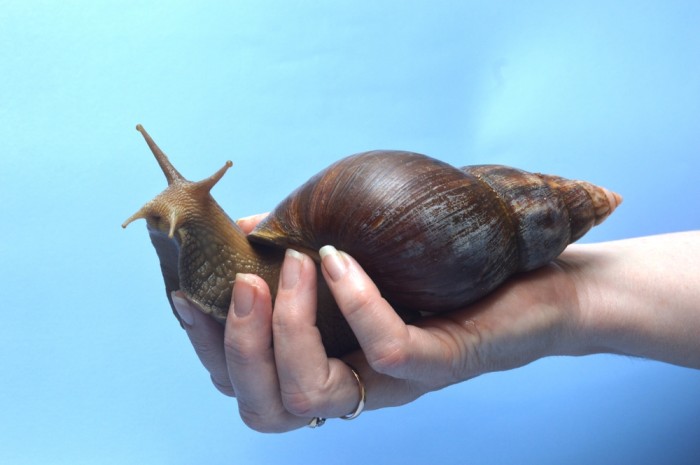The largest snail in the world is the Giant African Land Snail (Achatina fulica). These giant African snail size can reach lengths of up to 15.5 inches and weigh over 1 pound. Giant African Land Snails are native to East Africa but have been introduced to many other parts of the world, mainly as pets.
African snails, particularly the Giant African Land Snail (Achatina fulica), can be considered potentially dangerous. The level of danger they pose depends on various factors, including their introduction to new environments and their interaction with native flora, fauna, and agriculture.
Here are some potential reasons why Giant African Land Snails can be dangerous:
1. Invasive Species: When introduced to non-native habitats, they can become invasive and compete with native species for resources. Their rapid reproduction and voracious appetite for a wide range of plants can have detrimental effects on local ecosystems.
2. Agricultural Damage: Giant African Land Snails are known to feed on a variety of plants, including agricultural crops. Their herbivorous appetite can result in damage to crops and gardens, leading to economic losses for farmers.
3. Human Health Concerns: Some species of African snails can carry parasitic worms that can transmit to humans. It can cause diseases like eosinophilic meningitis. While the risk of transmission is relatively low and proper hygiene can mitigate it.
4. Quarantine Regulations: Due to the potential risks they pose, many countries have strict regulations of Giant African Land Snails. Violating these regulations can result in legal consequences.
It’s important to note that not all African snails are inherently dangerous, and many people keep them as pets without any problems. It is crucial to be responsible when keeping any non-native species as giant snail pet and to avoid releasing them into the wild.
If you encounter Giant African Land Snails or other invasive species in your area, it is advisable to report their presence to local authorities or environmental agencies to help mitigate their impact.

